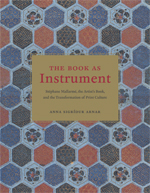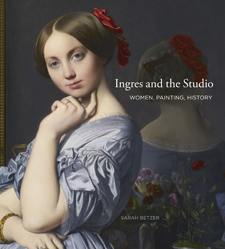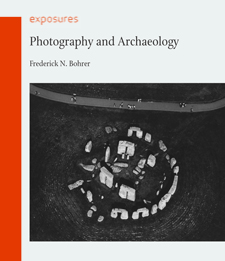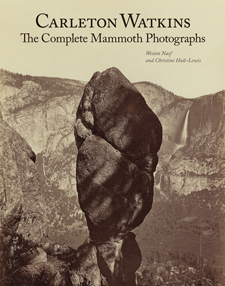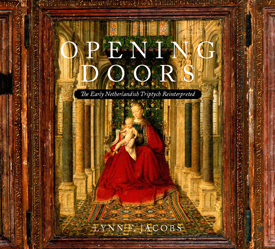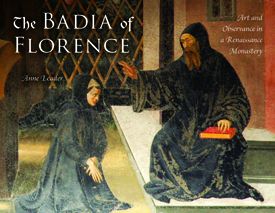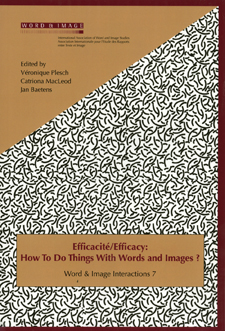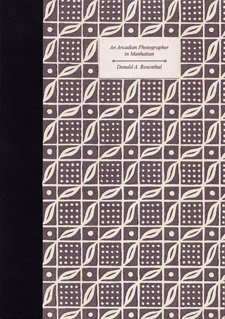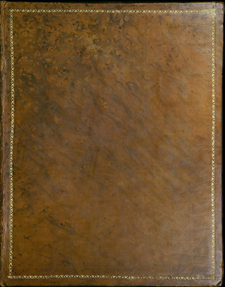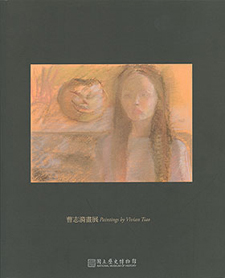CAA News Today
Grants, Awards, and Honors
posted by CAA — April 15, 2012
CAA recognizes its members for their professional achievements, be it a grant, fellowship, residency, book prize, honorary degree, or related award.
Grants, Awards, and Honors is published every two months: in February, April, June, August, October, and December. To learn more about submitting a listing, please follow the instructions on the main Member News page.
April 2012
Craig Clunas, a professor of art history at the University of Oxford in England, will deliver the sixty-first A. W. Mellon Lectures in the Fine Arts at the National Gallery of Art in Washington, DC. Clunas’s six-part lecture series, titled “Chinese Painting and Its Audiences,” will take place on Sundays from March 11 to April 22, 2012.
Brianne Cohen, a doctoral student at the University of Pittsburgh in Pennsylvania, has been awarded a grant from the National Committee for the History of Art to attend the thirty-third International Congress of the History of Art in Nuremberg, Germany, taking place July 15–20, 2012.
Jennifer Cohen, a PhD candidate at the University of Chicago in Illinois, has received a grant from the National Committee for the History of Art to attend the thirty-third International Congress of the History of Art in Nuremberg, Germany, taking place July 15–20, 2012.
Dana Cowen, a doctoral candidate at Case Western Reserve University in Cleveland, Ohio, has accepted a travel grant from the National Committee for the History of Art. She will apply the funds to attend the thirty-third International Congress of the History of Art, to be held July 15–20, 2012, in Nuremberg, Germany.
Vidya J. Dehejia, the Barbara Stoler Miller Professor of Indian and South Asian Art at Columbia University in New York, has received a Padma Bhushan award from the government of India. Equivalent to British knighthood, the award recognizes the distinguished service of an individual to the nation, in any field.
Muriel Hasbun, a photographer and associate professor at the Corcoran College of Art and Design in Washington, DC, has been awarded a 2012 Maryland State Arts Council Individual Artist Award in Photography for encarnado: embodied, a series of color photographs taken in a Mexican slaughterhouse.
John Hawke, a New York–based artist who creates public art installations, has been chosen to attend the 2012 Art and Law Residency, a program developed by Volunteer Lawyers for the Arts in New York. The residency provides a platform for artists, writers, and curators to examine their visual practice and critical writing in the context of contemporary and historical legal issues.
Jill Holaday, a doctoral student at the University of Iowa in Iowa City, has been awarded a grant from the National Committee for the History of Art to attend the thirty-third International Congress of the History of Art in Nuremberg, Germany, taking place July 15–20, 2012.
Jennifer A. Morris, a PhD candidate at Princeton University in Princeton, New Jersey, has earned a travel grant from the National Committee for the History of Art. She will use the funds to attend the thirty-third International Congress of the History of Art, which takes place July 15–20, 2012, in Nuremberg, Germany.
Stephanie E. Rozman, a PhD student at the University of Minnesota, Twin Cities, has received a grant from the National Committee for the History of Art to attend the thirty-third International Congress of the History of Art in Nuremberg, Germany, taking place July 15–20, 2012.
Diana Shpungin, a Brooklyn-based artist who works in installation, drawing, and animation, will take part in the Volunteer Lawyers for the Arts’ 2012 Art and Law Residency. The residency, taking place in New York, provides artists, curators, and writers with an opportunity to examine their art practice and critical writing within a framework of historical and contemporary legal issues.
Erin Sullivan, a PhD student at the University of Southern California in Los Angeles, has been awarded a grant from the National Committee for the History of Art to attend the thirty-third International Congress of the History of Art in Nuremberg, Germany, taking place July 15–20, 2012.
Exhibitions Curated by CAA Members
posted by CAA — April 15, 2012
Check out details on recent shows organized by CAA members who are also curators.
Exhibitions Curated by CAA Members is published every two months: in February, April, June, August, October, and December. To learn more about submitting a listing, please follow the instructions on the main Member News page.
April 2012
Joachim Pissarro, Bibi Calderaro, Julio Grinblatt, and Michelle Yun. Notations: The Cage Effect Today. Hunter College Time Square Gallery, Hunter College, City University of New York, New York, February 17–April 21, 2012.
Anne L. Poulet, Colin B. Bailey, and Susan Grace Galassi. A Passion for Drawings: Charles Ryskamp’s Bequest to the Frick Collection. Frick Collection, New York, February 14–April 8, 2012.
Books Published by CAA Members
posted by CAA — April 15, 2012
Publishing a book is a major milestone for artists and scholars—browse a list of recent titles below.
Books Published by CAA Members appears every two months: in February, April, June, August, October, and December. To learn more about submitting a listing, please follow the instructions on the main Member News page.
April 2012
Anna Sigrídur Arnar. The Book as Instrument: Stéphane Mallarmé, the Artist’s Book, and the Transformation of Print Culture (Chicago: University of Chicago Press, 2011).
Sarah Betzer. Ingres and the Studio: Women, Painting, History (University Park: Pennsylvania State University Press, 2012).
Frederick N. Bohrer. Photography and Archeology (London: Reaktion Books, 2011).
Christine Hult-Lewis and Weston Naef. Carleton Watkins: The Complete Mammoth Photographs (Los Angeles: J. Paul Getty Museum, 2011).
Lynn F. Jacobs. Opening Doors: The Early Netherlandish Triptych Reinterpreted (University Park: Pennsylvania State University Press, 2011).
Anne Leader. The Badia of Florence: Art and Observance in a Renaissance Monastery (Bloomington: Indiana University Press, 2011).
Véronique Plesch, Catriona MacLeod, and Jan Baetens, eds., Efficacité/Efficacy: How To Do Things with Words and Images? (Amsterdam: Rodopi, 2011).
Donald A. Rosenthal. An Arcadian Photographer in Manhattan: Edward Mark Slocum (Portsmouth, UK: Callum James Books, 2012).
Vanessa Bezemer Sellers. Gijsbert van Laar’s “Magazijn van Tuin-sieraaden” or “Storehouse of Garden Ornaments” (New York: Foundation for Landscape Studies, 2012).
Vivian Tsao. Paintings by Vivian Tsao (Taipei City, Taiwan: National Museum of History, 2009).
Committee on Women in the Arts Picks for April 2012
posted by CAA — April 10, 2012
Each month, CAA’s Committee on Women in the Arts selects the best in feminist art and scholarship. The following exhibitions and events should not be missed. Check the archive of CWA Picks at the bottom of the page, as several museum and gallery shows listed in previous months may still be on view or touring.
April 2012
Kate Gilmore: Rock, Hard, Place
David Castillo Gallery
2234 NW Second Avenue, Miami, FL 33127
April 14–May 31, 2012
Kate Gilmore’s work has drawn comparisons with numerous pioneers of performance art, such as Marina Abramović and Yoko Ono. Captured in video, photography, and sculpture, Gilmore’s actions are visually compelling statements in which the artist play-acts different female stereotypes, while also referencing the materials and processes of manual labor and art-making. In Rock, Hard, Place (2012), hot-pink paint is wedged into a gridded structure of bowls, overflowing and leaving a unique mark, as a rock is smashed into each unit. For her show at David Castillo Gallery, the artist debuts two new videos, Pot Kettle Black and Break of Day. Each depicts Gilmore as an actor engaged in Sisyphean tasks that call into question the role of women in society; the works also forward the idea of the artist as a free-willed magician.
Sturtevant: Image over Image
Moderna Museet
Skeppsholmen, Stockholm, Sweden
March 17–August 26 2012
Elaine Sturtevant, an American-born artist based in Paris, creates masterful handmade replicas of artwork by Jasper Johns, Andy Warhol, and Joseph Beuys that challenge narratives of authenticity and originality, while also speaking to the artistic possibilities that arise from cloning and cybernetics. More recently she has made “cover versions” of noted works by Paul McCarthy, Felix Gonzales-Torres, and Robert Gober. Sturtevant: Image over Image showcases thirty works of art, including four recent video installations, and new pieces that were produced specifically with the Moderna Museet’s collection in mind, such as a copy of Marcel Duchamp’s freestanding sculpture Fresh Widow (1920/1964). Sturtevant’s mode of production, bemusing to audiences and critics when it first appeared in the mid-1960s, has now assumed the mantel of a postmodern feminist critique, albeit one that still leaves room for analysis, debate, and pleasure.
Zoe Leonard: Observation Point
Camden Arts Centre
Arkwright Road, London, NW3 6DG, United Kingdom
March 31–June 24, 2012
Zoe Leonard has transformed one gallery of the Camden Arts Centre into a room-sized camera obscura, creating a live, inhabitable photographic image that is time based and always changing. In two other rooms, she exhibits a series of photographs taken with the lens pointed directly at the sun and presents a wall installation of found postcards of Niagara Falls. All three installations stretch the limits of photography and ask, what exactly constitutes a “photograph”? The exhibition also considers how we experience and shape the world through accumulation and manipulation of photographs.
Jaune Quick-To-See Smith: Landscapes of an American Modernist
Georgia O’Keeffe Museum
217 Johnson Street, Santa Fe, NM 87501
January 27–April 29, 2012
An exhibition of oil paintings and works on paper by Juane Quick-To-See Smith, a New Mexico–based artist and a member of the Confederated Salish and Kootenai Nation, evokes the Southwestern landscape and recalls certain modernist masters, such as Georgia O’Keeffe, and Marsden Hartley, who joined symbolism to abstraction. Quick-To-See Smith’s work also deals with political and ecological themes in the Petroglyph Park Series (1985) and in a group of paintings from the late 1980s created in honor of Chief Seattle, a nineteenth-century Native American leader who prophesized the environmental damage of the twentieth century.
Dara Friedman: Dancer
CAM Raleigh
409 West Martin Street, Raleigh, NC 27603
January 28–May 14, 2012
CAM Raleigh is screening Dancer, the latest film by the German-born artist Dara Friedman, which she created in Miami in 2011. Originally filmed in 16mm and transferred to high-definition digital video, Dancer captures sixty-six performers in forty separate segments representing all forms of movement and dance, from hip-hop to modern, flamenco to skateboarding, and classical ballet to skipping down the street. Dancer is the third installment in an unofficial trilogy that includes Musical (2007–8) and Frankfurt Song (2010). All three films explore spontaneous actions and synchronized performances in international urban settings.
Sarah Braman: These Days
International Art Objects Galleries
6086 Comey Avenue, Los Angeles, CA 90034
March 31–May 5, 2012
Sarah Braman works in painting and sculpture, frequently creating mash-ups of the two media. These Days presents playful and wide-ranging work in oil and spray paint on wood boards, shipping crates, and cardboard. Freestanding Plexiglas chambers, resembling sci-fi coffins of pleasure, are paired with the occasional found object (like a 1980s boombox) in works such as Time Machine, TV in bed, andDawn Dog. Braman’s art is without a predetermined conceptual underpinning; instead it is “engineered entirely to fulfill the dream of desire,” according to Rupert Winkelsnap, the author of the gallery’s press release.
Jacqueline Humphries
Greene Naftali Gallery
508 West 26 Street, Eighth Floor, New York, NY 10001
March 28–April 28, 2012
The New York–based painter Jacqueline Humphries is known for her large-scale canvases and expressionistic mark-making, as well as the frequent use of metallic silver paint evocative of industrial coloring, gelatin-silver photographs, and the cinema’s fanciful silver screen. The new paintings from her seventh solo show at the Greene Naftali Gallery continue these formal investigations while introducing an exploration of the push–pull between abstract flatness and pictorial space, framing within the picture plane, and the immense variety found in the repetition of painterly motifs.
Yayoi Kusama
Tate Modern
Bankside, London SE1 9TG, United Kingdom
February 9–June 5, 2012
In New York in the early 1960s, the Japanese-born Yayoi Kusama often performed her art in public as a staged “happening,” exploring a newfound territory between theater and visual art that Claes Oldenburg was charting at the same time. Yet she stood out against the male-dominated Pop and Fluxus scenes. Active as an artist for over four decades, and a voluntarily inmate in a mental institution since 1977, Kusama has created work that remains as arrestingly obsessive, spontaneous, and unabashedly colorful as ever. The Tate Modern retrospective includes a cinema series, Kusama on Film, which runs from April 15 to May 27, 2012. Screenings include landmark records of the artist’s rarely seen performances, Kusama’s Self-Obliteration and Love-In Festival (both 1968), which provide a window onto this artist’s unique, hybrid art practice.
Strengthening Partnerships with CAA’s Affiliated Societies
posted by Christopher Howard — April 09, 2012
The following report was written by Barbara Nesin, president of the CAA Board of Directors, and Judith Thorpe, also a board member.
The third annual meeting of CAA’s affiliated societies was held during the 100th Annual Conference in Los Angeles on Saturday, February 25, 2012. Twenty representatives from the affiliates joined the CAA president, Barbara Nesin, and members of the Board of Directors to review the accomplishments of the past year and to discuss future directions.
Nesin took this opportunity to announce the formation of a Task Force on Affiliated Societies, approved by the board at its October 2011 meeting. Starting in May 2012, the task force will develop recommendations about the best means of working together to achieve common goals and objectives. She thanked Judith Thorpe, a CAA board member, for leading that effort and for assembling a team of committed board members to serve on the task force. Thorpe reviewed the highlights of CAA’s 2010–2015 Strategic Plan that specifically call for affiliated-society engagement, especially through enhanced communications, advocacy, and membership. Nesin also thanked Jean Miller, another CAA board member, for her preliminary research on which the task force can build. The task force will likely conduct a membership survey before making its recommendations.
Nesin also noted the contributions of the affiliates to the Los Angeles conference. There were twenty-three major affiliate-sponsored sessions reviewed and selected by the Annual Conference Committee, in addition to over seventy special sessions and business meetings providing many opportunities for all CAA members to become familiar with the work of the affiliate organizations.
Nesin encouraged greater collaboration between CAA and the affiliates in the future to include activities beyond the conference, currently the center of affiliate activities. With this in mind, a spreadsheet of all affiliated-society conferences and meetings throughout the year was distributed so that CAA board members could plan to attend more of these events. This year CAA participated in the Southeastern College Art Conference, the annual meeting for the Mid-America College Art Association, and the Society for Photographic Education national conference. CAA staff has also increased communications with affiliated-society representatives by making use of the affiliate listserv and by inviting input on a variety of topics. By the same token, Nesin encouraged the affiliates to nominate their members for service on CAA’s committees and board. Those in attendance had the opportunity to ask questions and to share suggestions.
The homepage for the main CAA website was enhanced with an Affiliated Societies tab on the horizontal navigation bar that links directly to the Directory of Affiliated Societies. Each affiliated-society listing contains a link to its own website. Nesin pointed out the importance of keeping the contact information for each organization up to date to be sure that information goes to the right person, who is in turn responsible for sharing information with the leadership and/or members of his or her organization. To keep the directory current, CAA annually seeks updates and solicits announcements and news from the groups every two months; these items appear in the Affiliated Society News section of the CAA website, which is promoted through CAA News.
CAA’s seventy-five affiliated societies, covering a wide range of disciplines, are essential partners in the fulfillment of the organization’s mission to promote the visual arts and their understanding through committed practice and intellectual engagement.
CAA Seeks Publications Committee Member
posted by Alyssa Pavley — April 04, 2012
CAA invites nominations and self-nominations for one member-at-large to serve on its Publications Committee for a three-year term, July 1, 2012–June 30, 2015. Candidates must possess expertise appropriate to the committee’s work.
Meeting three times a year, the Publications Committee is a consultative body that advises the CAA Publications Department staff and the CAA Board of Directors on publications projects. It supervises the editorial boards of The Art Bulletin, Art Journal, and caa.reviews, as well as CAA’s book-grant juries; sponsors a practicum session at the Annual Conference; and, with the CAA vice president for publications, serves as liaison to the board, membership, editorial boards, book-grant juries, and other CAA committees.
The Publications Committee meets three times a year: twice in New York in the spring and fall and once at the CAA Annual Conference in February. CAA reimburses members for travel and lodging expenses for the two New York meetings in accordance with its travel policy, but members pay these expenses to attend the conference. Members of all CAA committees volunteer their services without compensation.
Candidates must be current CAA members and should not be serving on another CAA editorial board or committee. In addition, they may not be individuals who have served as members of a CAA editorial board within the past five years. Nominators should ascertain their nominee’s willingness to serve before submitting a name; self-nominations are also welcome. Appointments are made by the CAA president in consultation with the vice president for publications. Please send a statement describing your interest in and qualifications for appointment, a CV, and your contact information to: Publications Committee, College Art Association, 50 Broadway, 21st Floor, New York, NY 10004; or email the documents to Alyssa Pavley, CAA editorial assistant. Deadline: May 2, 2012.
David Craven: In Memoriam
posted by CAA — April 03, 2012
The following obituary was compiled by the deceased’s family and submitted by Patricia Mathews, professor of art history at Hobart and William Smith Colleges in Geneva, New York, and a member of the CAA Board of Directors.

David Craven
David Lee Craven, distinguished professor of art history at the University of New Mexico in Albuquerque, passed away on February 11, 2012. He was 60 years old. Craven was beloved by all who knew him for his passionate dedication to writing, lecturing, and teaching art history. He is recognized by his peers as one of the most informed and incisive art historians in the world, a leading scholar in twentieth-century art from Latin America, post-1945 art in the United States, and the critical theory and methodology of art history and visual culture. His ten books and over 150 articles have appeared in twenty-five different countries and been translated into fifteen different languages. Craven’s close friend and fellow professor at the University of New Mexico, Susanne Baackmann, recalled his “generous spirit” and remembered that “his love for life and work, two concepts that were synonymous in his mind, was as intense as it was infectious.” He had taught at New Mexico since 1993 and was affiliated with the university’s Latin American and Iberian Institute.
Craven earned a PhD in art history from the University of North Carolina in Chapel Hill in 1979, an MA degree in art history from Vanderbilt University in Nashville, Tennessee, in 1974, and a BA in European history from the University of Mississippi in Oxford, where he graduated magna cum laude in 1972. Fluent in Spanish, German, and French, Craven gave lectures in universities and museums in the United States and internationally, traveling to Russia, Mexico, Spain, Germany, England, and France. His art-history books are respected as authoritative in the field, and many are popular with a general audience, such as the widely read Art and Revolution in Latin America, 1910–1990 (2002), which was nominated for a 2004 Mitchell Prize. His other books include Diego Rivera as Epic Modernist (1997); The New Concept of Art and Popular Culture in Nicaragua since the Revolution in 1979 (1989); Poetics and Politics in the Life of Rudolf Baranik (1997); and Abstract Expressionism as Cultural Critique: Dissent during the McCarthy Period (1999). He recently edited Dialectical Conversions: Donald Kuspit’s Art Criticism (2011) with Brian Winkenweder.

Among the many awards and recognitions Craven received during his long teaching career are a Medal for Excellence from the state of New York in 1991 for his work at Cortland College at the State University of New York, and a Faculty Acknowledgement Award at the University of New Mexico in 2003. In 2007 he was chosen to be the Rudolf Arnheim Professor at Humboldt University in Berlin. Craven won more than fifteen major national and international grants and fellowships from numerous organizations, such as the American Council of Learned Societies, the National Endowment for the Arts, the National Endowment for the Humanities, the Rockefeller Foundation, the Ministerio de Cultura de Espana, and the Instituto Nacional de Bellas Artes de Mexico. His work on Latin and Central American art has earned him the praise of Ernesto Cardenal Martínez, Nicaragua’s minister of culture from 1979 to 1987.
Craven was born in Alexandria, Louisiana, on March 22, 1951, to Peggy and Albert Craven. He lived with his family in Houston, Texas, before moving to Oxford, Mississippi, where his father taught at the University of Mississippi. Craven’s parents encouraged his early interest in art, and he began taking art classes in fourth grade. A gifted athlete, Craven was the star quarterback for the Oxford High School football team and won MVP honors in the 1969 season. He also brought his high school’s basketball team into the state championship.
Craven was preceded in death by his father Albert Craven; his sisters Anita and Peggy Melinda; and his brother Jonathon. He is survived by his mother Peggy Craven; his sister Laura Duncan and her husband Lee, and a niece and nephew, Caroline and Lee Duncan; his brother Brian Craven and his wife Pam and nephews Jonathon, Allen, and Mark Craven; his brother Paul Craven; his niece Edy Dingus and nephew Charles Dingus, and nephew John Phillip Dingus, as well as his dear friends Susanne Baackmann and Hannah Baackmann-Friedlander of Albuquerque, New Mexico.
Audio Recordings from the 2012 Annual Conference
posted by Christopher Howard — April 02, 2012
 The 2012 Annual Conference in Los Angeles boasted an incredibly diverse array of sessions. Audio recordings for eighty-three of the panels—including “Picturing Urban Space in Central Europe since 1839,” “Oleg Grabar’s Impact on the Practice and History of Art,” and the two-part “Mobile Art: The Aesthetics of Mobile Network Culture in Place Making”—are now available for sale.
The 2012 Annual Conference in Los Angeles boasted an incredibly diverse array of sessions. Audio recordings for eighty-three of the panels—including “Picturing Urban Space in Central Europe since 1839,” “Oleg Grabar’s Impact on the Practice and History of Art,” and the two-part “Mobile Art: The Aesthetics of Mobile Network Culture in Place Making”—are now available for sale.
A set of MP3 audio recordings from the Los Angeles conference is available for $199.95 as a DVD-ROM. Individual sessions, available only as downloads, are $24.95 each. Please visit Conference Media to view the list of sessions and to order.
The full range of art history is represented in sessions such as “Exceeding the Limits of Ancient Rome,” “Narrative in Gothic Art,” and “The Interconnected Tenth Century.” Several sessions focus on art and design in the conference city, including “Finish Fetish Sculpture from Los Angeles 1960s–70s: Conservation Dilemmas” and “Pacific Standard Time and Chicano Art: A New Los Angeles Art History.” Topics about contemporary art range from “Flagging: Aesthetic Tactics and Queer Signification” and “Momentum: Women/Art/Technology” to “Conceptual Art as Comedic Practice” and “Toward a Rock and Roll History of Contemporary Art.”
CAA also recorded two popular Centennial sessions: “Seeing Is Doing, Doing Is Teaching,” chaired by Michael Ned Holte, and “‘Reclaiming’ the Studio as a Site of Production,” led by Patty Wickman. Both curators and museum educators will be especially interested in “Live Forever: Performance Art in the Changing Museum Culture” and “‘Your Labels Make Me Feel Stupid’: Museum Labels as Art-Historical Practice.”
Whether you took part in, attended, or missed a particular conference session, these recordings are a must-have for your library, research, or teaching. Listen to them while walking across campus, while driving in your car or using public transportation, or while relaxing in your home.
In addition to the Los Angeles sessions, you can also purchase recordings from the past six conferences: New York (2011), Chicago (2010), Los Angeles (2009), Dallas–Fort Worth (2008), New York (2007), and Boston (2006). See CAA’s Conference Audio section or visit Conference Media for details.
Thanks to Conference Supporters and the Annual Conference Committee
posted by Emmanuel Lemakis — April 02, 2012
CAA extends special thanks to the supporters of the 100th Annual Conference and Centennial Celebration in Los Angeles. The Getty Foundation awarded CAA a generous grant to support the attendance and participation of twenty international art historians. The National Endowment for the Arts renewed its support of ARTspace, which is organized by CAA’s Services to Artists Committee and includes programming designed by artists for artists. CAA is grateful to the Broad Foundation for providing funding for complimentary Wi-Fi for the Student and Emerging Professionals Lounge and to the Samuel H. Kress Foundation for granting travel fellowships for international conference participants. CAA would also like to thank Art in America, the official media sponsor, and American Airlines, the official conference airline, for their contributions.
This year’s Book and Trade Fair supporters were: Blick Art Materials at the Partner level and ARTstor, Intellect Books, Prestel Publishing, and Rizzoli International Publications at the Sponsor level. The Los Angeles County Museum of Art generously hosted the Centennial Reception, and Pearson presented a $1,000 prize to the recipients of the 2012 Distinguished Teaching of Art and Art History Awards. CAA is also grateful for support from the Westin Bonaventure Hotel and Suites and from Art Platform—Los Angeles.
CAA extends special thanks to the Annual Conference Committee, whose members were responsible for the 2012 program: Sue Gollifer, University of Brighton and vice president for Annual Conference (chair); Sharon Matt Atkins, Brooklyn Museum; Peter Barnett, Metropolitan Museum of Art; Brian Bishop, Framingham State University; Connie Cortez, Texas Tech University; Ken Gonzales-Day, Scripps College; and Sabina Ott, Columbia College Chicago. Regional representatives for the committee were: Stephanie Barron, Los Angeles County Museum of Art; and Margaret Lazzari, University of Southern California.
CAA is grateful to Jacki Apple of the Art Center College of Design and chair of the Services to Artists Committee for programming ARTspace and the Media Lounge, as well as all volunteers and staff members who made the conference possible.




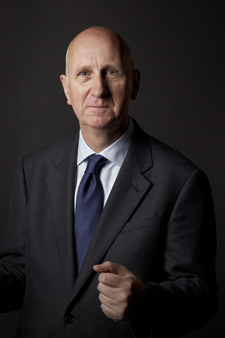 Craig Clunas
Craig Clunas

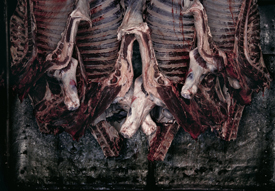 Muriel Hasbun, encarnado: embodied (carne/meat), 2011, archival pigment print (artwork © Muriel Hasbun)
Muriel Hasbun, encarnado: embodied (carne/meat), 2011, archival pigment print (artwork © Muriel Hasbun)
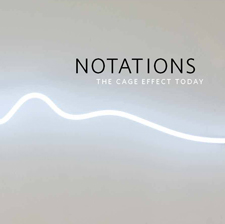 Cover of the exhibition catalogue for Notations: The Cage Effect Today
Cover of the exhibition catalogue for Notations: The Cage Effect Today
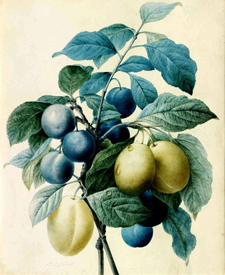 Pierre-Joseph Redouté, Plum Branches Intertwined, 1802–4, watercolor on vellum, 31.9 x 26.3 cm. Frick Collection, bequest of Charles A. Ryskamp, 2010 (artwork in the public domain; photograph by Michael Bodycomb)
Pierre-Joseph Redouté, Plum Branches Intertwined, 1802–4, watercolor on vellum, 31.9 x 26.3 cm. Frick Collection, bequest of Charles A. Ryskamp, 2010 (artwork in the public domain; photograph by Michael Bodycomb)
